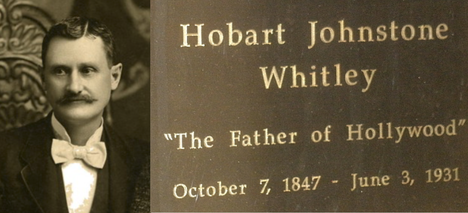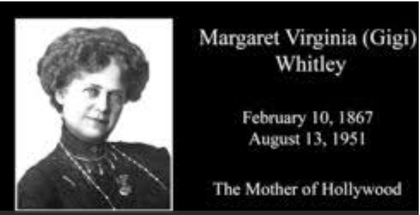Heather Goers, senior architectural historian of Historic Resources Group, spoke to the commission about the significance of the Hollywood Forever Cemetery before it voted to recommend the property’s designation. She noted that the period of significance for the property spans from 1899, the cemetery’s establishment, to 1941, when the Douglas Fairbanks Monument was erected. That monument was designed by Howard Seidell of the Georgia Marble Company and was erected two years after the actor’s death.


Character-defining structures include the Historic Colonnade where the Father of Hollywood, H. J. Whitley is buried. You can find him in the Colonnade, South Wall, near the West Entrance. The property — located at 6000 Santa Monica Blvd., between Van Ness Avenue and Gower Street — became a tourist destination due to high-profile and celebrity burials, which began as early as 1910, when the victims of the Los Angeles Times bombings were buried in the cemetery. Gigi Whitley(also located in the Colonnade) had a prophetic dream that saved the lives of her husband H. J. Whitley, Harry Chandler and H. G. Otis owners of the Los Angeles Times.
“We can talk about the buildings and structures and landscape features that make this property significant in terms of its development, but one of the things that is abundantly clear in researching this property and experiencing it is its intangible connection to the history of Hollywood … the fact that those burials were people who helped pioneer and develop Hollywood,” Goers said.


